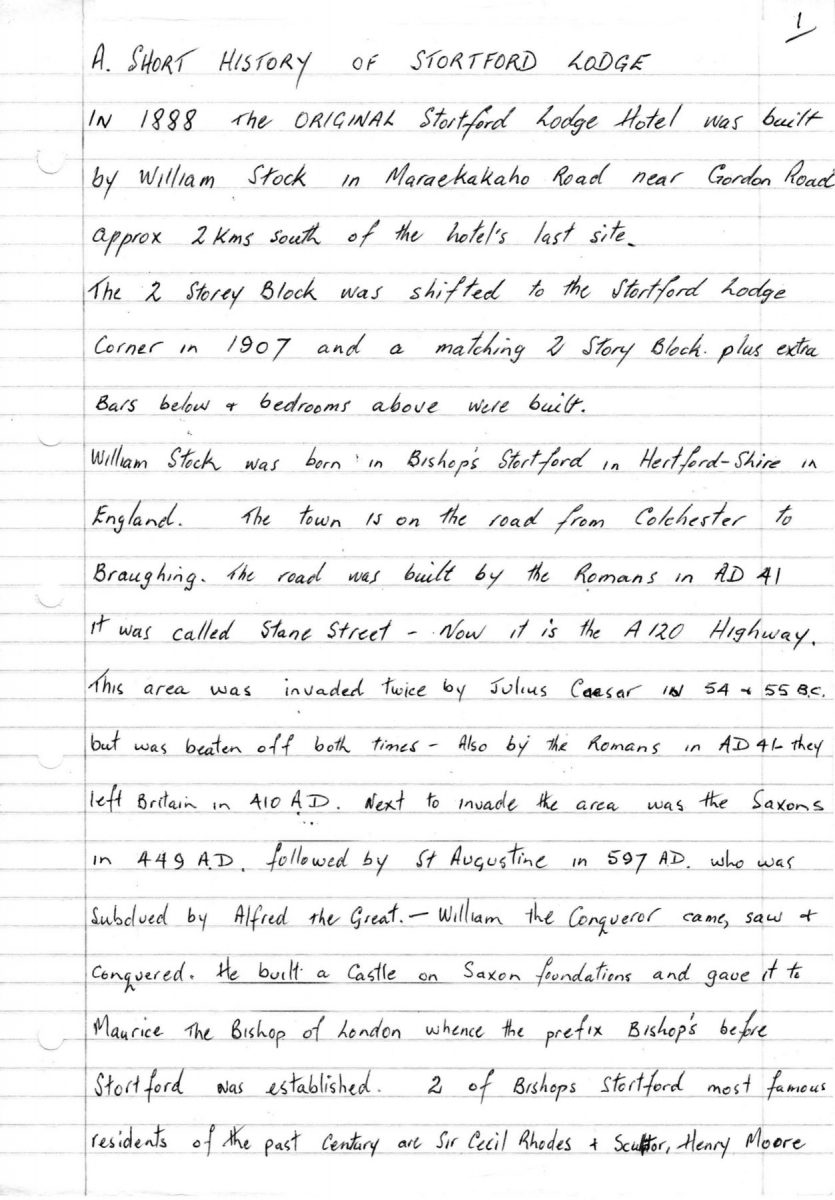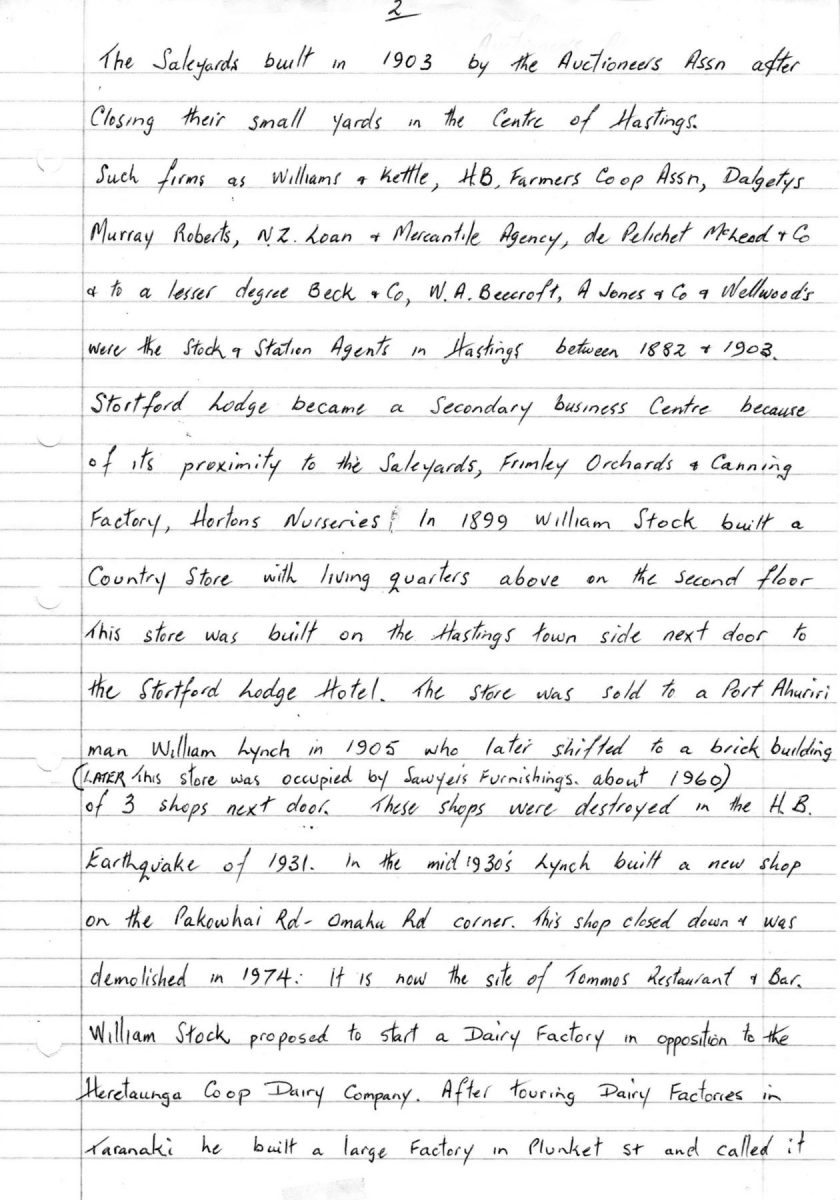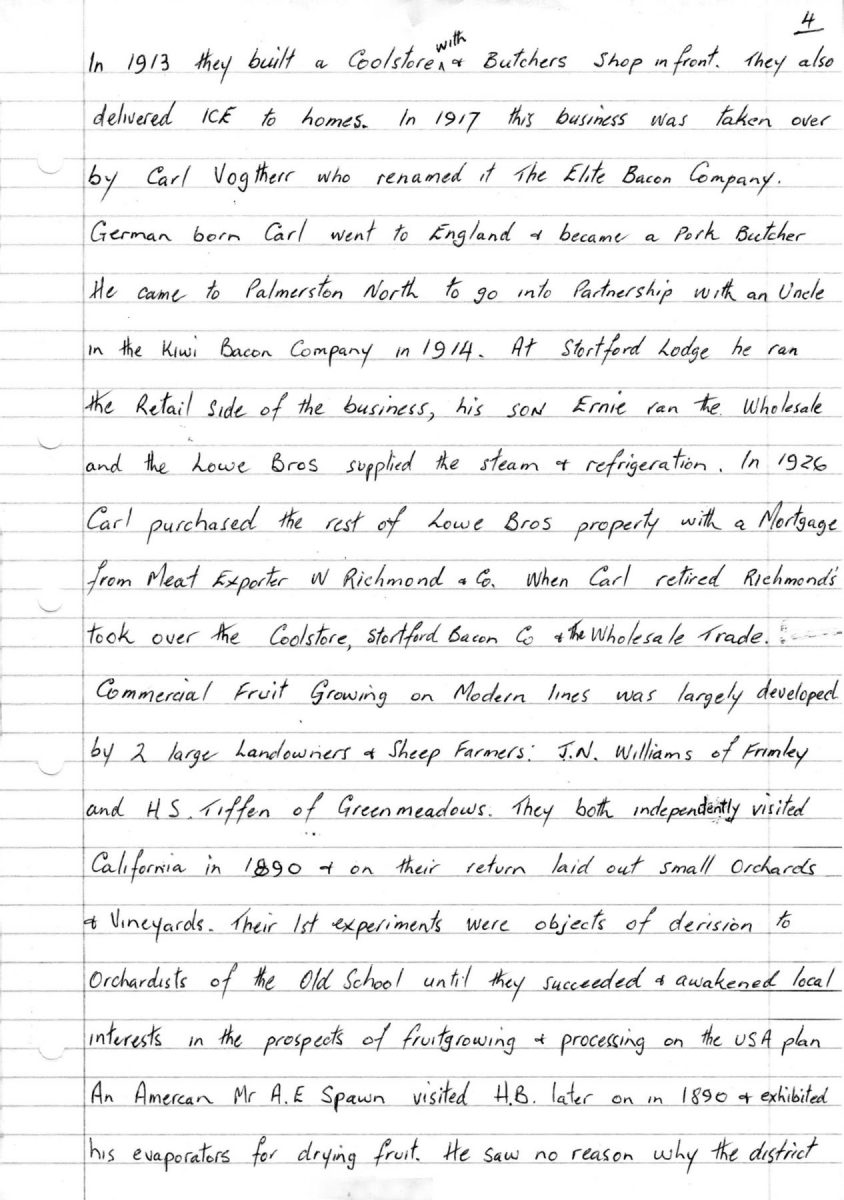Page 8
I became interested in collecting Old Historical Photographs after setting up as a photographer in the Stortford Lodge Area in 1964.
A customer asked me to copy a collection of Old Photographs belonging to Ernie Vogtherr. These Photographs show the buildings on Maraekakaho and Omahu Rds Cnr. when Lowe Bros Butchers Shop was there and later when Ernie Vogtherr’s father Carl had the Elite Bacon Co. and later on when Ernie established a Service Station selling petrol brands such as Union – Plume – Big Tree Texaco. Today the site is now The Cumberland Court Motel.
Other Industrial firms in business in Stortford Lodge included, Harris Machinery – Farm Products H.B. Cooperative, – Attwood and Reid – General Carriers, – Awatoto Shingle Co, – Concrete Products Manufacturers, – U.E.B. Industries – Packaging Products – Morrison Industries Motor Mowers Manufacturers. – J.C. Mackersey Construction, Greens Laundry. – Hastings Memorial Hospital now HB Regional Hospital, is also in the Area as is Hastings Girls High School – Heretaunga Intermediate School and Frimley Primary School and Lindisfarne College for Boys.
After Ernie Vogtherr commenced selling Petrol and Oil, another Service Station was established at Stortford Lodge Corner by Chas Martin in the 1920s. This station was purchased by Douglas Round in Dec 1930 and was operated by Douglas and his wife and son Fred.
Petrol Brands sold included Voco – Big tree – Hercules – Shell – Imperial – Atlantic – Texaco and Europa. Younger son Les joined the Premier Service Station as a mechanic later. Caltex purchased the Premier in 1970
Today Mobil Oil B.P. and Caltex Stortford operate on Stortford Lodge Corner.



















Do you know something about this record?
Please note we cannot verify the accuracy of any information posted by the community.